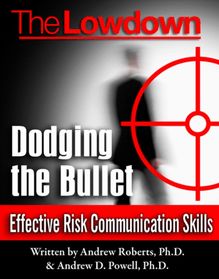-
 Univers
Univers
-
 Ebooks
Ebooks
-
 Livres audio
Livres audio
-
 Presse
Presse
-
 Podcasts
Podcasts
-
 BD
BD
-
 Documents
Documents
-
- Cours
- Révisions
- Ressources pédagogiques
- Sciences de l’éducation
- Manuels scolaires
- Langues
- Travaux de classe
- Annales de BEP
- Etudes supérieures
- Maternelle et primaire
- Fiches de lecture
- Orientation scolaire
- Méthodologie
- Corrigés de devoir
- Annales d’examens et concours
- Annales du bac
- Annales du brevet
- Rapports de stage
La lecture à portée de main
Vous pourrez modifier la taille du texte de cet ouvrage
Découvre YouScribe en t'inscrivant gratuitement
Je m'inscrisDécouvre YouScribe en t'inscrivant gratuitement
Je m'inscrisEn savoir plus
Vous pourrez modifier la taille du texte de cet ouvrage
En savoir plus

Description
Sujets
Informations
| Publié par | Creative Content |
| Date de parution | 20 juillet 2010 |
| Nombre de lectures | 0 |
| EAN13 | 9781906790455 |
| Langue | English |
Informations légales : prix de location à la page 0,0150€. Cette information est donnée uniquement à titre indicatif conformément à la législation en vigueur.
Extrait
The Lowdown: A Short History of the First Gulf War
Written by Dr Rob Johnson, Oxford University
THE LOWDOWN: A SHORT HISTORY OF THE FIRST GULF WAR
First published in 2010
By Creative Content Ltd, Roxburghe House, Roxburghe House, 273-287 Regent Street, London, W1B 2HA.
Copyright © 2010 Creative Content Ltd
The moral right of Dr. Rob Johnson to be identified as the author of this work has been asserted by him in accordance with the Copyright, Designs and Patents Act, 1988.
All rights reserved. No part of this publication may be reproduced or transmitted in any form by any means, electronic or mechanical, including photocopying, recording or any information storage and retrieval system, without prior permission in writing from the publisher nor be otherwise circulated in any form or binding or cover other than that in which it is published.
In view of the possibility of human error by the authors, editors or publishers of the material contained herein, neither Creative Content Ltd. nor any other party involved in the preparation of this material warrants that the information contained herein is in every respect accurate or complete and they are not responsible for any errors or omissions, or for the results obtained from the use of such material. The views expressed in this publication are those of the author and do not necessarily reflect the opinion or policy of Creative Content Ltd. or any employing organization unless specifically stated
Typesetting by CPI Rowe
Cover Design by Daniel at HCT Design
ISBN 978-1-906790-45-5
www.creativecontentdigital.com
TABLE OF CONTENTS
Introduction: The Gulf War
Part 1: The Invasion of Kuwait
Part 2: Desert Storm
Part 3: The Causes of War
Part 4: The Rise of Saddam Hussein
Part 5: Saddam’s War
Part 6: Disciplining the Iraqi People
Part 7: Saddam’s War Crimes
Part 8: Saddam’s Victory
Part 9: The Gulf Crisis, 1990
Part 10: The Road to War
Part 11: Desert Shield to Desert Sabre
Part 12: The Hundred Hour War
Part 13: Looking Back
Introduction
In 2003, the capital of Iraq was bombarded with overwhelming force - and spokesmen of the American-led Coalition described the onslaught as a new strategy of ‘shock and awe.’ Enormous explosions reverberated around the city and great concrete structures were torn apart. Within days, coalition ground troops drove up through Iraq from the borders of Kuwait, supported by attacks on the southern coast and in the Kurdish-populated north. South of Baghdad, elements of the Republican Guard, the elite forces of the Iraqi regime, tried to hold the Western forces back, but they were destroyed by airstrikes and finished off by heavily armoured tanks. There were token acts of guerrilla-style resistance, the shape of things to come in the following years, but the Coalition forces were relentless and the Iraqi army was overwhelmed everywhere. In a matter of days, Iraq had been defeated.
The justifications of the Iraq War of 2003 remain controversial, but the British and American governments insisted that Saddam Hussein, the Iraqi leader, was a threat to the Middle East. They stated that if it was true that he possessed Weapons of Mass Destruction - an arsenal of nuclear warheads, and lethal chemical and biological agents – then he had the capability and the motivation to inflict millions of casualties against the West or to control the oil resources in the region and thus destroy the economies of the world.
What made these accusations believable was Saddam’s track record. His regime was a punitive and brutal one, which governed by terror and intimidation. He had been responsible for the use of chemical warfare against unprotected civilians in his own country and thousands had perished. Thousands more Iraqis were ‘missing,’ murdered by the regime in a dirty war to maintain its grip on power. Saddam had also twice invaded neighbouring states in blatant acts of aggression. Iran had been attacked in 1980 and, following a ten year war, Saddam then turned against Kuwait. Despite United Nations sanctions and periodic military action against Iraq, Saddam remained defiant and unpredictable.
This seemed all the more remarkable when one reflects that in 1990-91 the world had formed a coalition against Iraq and defeated its armies decisively. In 2003, many speculated about what had gone wrong in that first Gulf War. Why had Saddam been able to survive? What was it that drove him to continue to snub the world and pursue his objectives so aggressively?
In "The Lowdown: A Short History of the First Gulf War," I would like to give you an explanation of the causes of the Gulf War in 1990-91, focussing on the decision-making in the region by local and international actors and in particular offering some clarification of how the Iran-Iraq War of the 1980s shaped the political and diplomatic landscape which led to a confrontation between President Saddam Hussein of Iraq and that world coalition led by the United States.
At the end of the Iran-Iraq War in 1988, Saddam Hussein believed he had achieved a significant military victory. He possessed the largest army of the region and therefore the means to take further his regional ambitions. But he was also acutely aware that his rule was based on shaky foundations. Tens of thousands had been killed and there were many more disabled in a conflict many had bitterly dubbed ‘Saddam’s war.’ Iraq was in significant debt and he could not demobilise his army lest it flood the labour market with unemployed and disaffected young men. Iraqis had made great sacrifices and the public expected a considerable peace dividend. Seeking compensation for defending the interests of other Arab states, Saddam therefore pinned his hopes on a rapid injection of wealth to rejuvenate the economy, restart development projects and purchase loyalty to the regime. He coveted Kuwait’s vast oil revenues, and considered using his vast and seasoned army to get them, putting him on a collision course with the West. Yet his military success in the war against Iran and tacit American backing he had enjoyed in the 1980s convinced Saddam that he could continue to act unilaterally. He calculated there would be little actual resistance to the invasion of Kuwait beyond some noisy protests. However, the West, emerging confidently from the Cold War, believed that its values of democracy, the promotion of human rights and the punishing of belligerence by any dictator, could now be applied to the world - and there was a new determination to defeat aggressors like Saddam.
Saddam was about to make a dreadful miscalculation. When Iraqi forces poured into Kuwait, much of the world united against him. The First Gulf War opened a new chapter in the region’s politics, bringing together the Arab states and the Western world. It gave rise to a new optimism about international relations and the settlement of disputes through collective action. It proved to be the ultimate demonstration of twentieth century conventional war and seemed to indicate that the West, particularly the United States, would dominate the coming decades. Yet, ultimately, it was a war that convinced Saddam to continue his defiance of the West and to exercise even greater ruthlessness to stay in power - a situation which led to the Coalition invasion of Iraq in 2003. This title, therefore, revisits the Gulf War in light of these more recent events.
Part 1: The Invasion of Kuwait
At 2:00 am on the 2nd of August 1990, three Iraqi armoured divisions consisting of thousands of battle-hardened troops swept across the northern border of Kuwait, while Iraqi Special Forces made amphibious and heli-borne landings against Kuwait city. Loud explosions reverberated around the Emir’s palace. By dawn, thick columns of smoke writhed across the urban landscape - but the deserted streets were still echoing to staccato bursts of machine gun fire, or the loud bang of grenades and rockets. All the Government buildings were quickly overrun, but a handful of guards kept up a determined defence of the palace. The Emir, Shaikh Jabir al Ahmad al-Jabir as-Sabah, was bundled into a civilian car and escaped amidst the mass of vehicles trying to get away from the fighting. Eventually the resistance at the palace was overwhelmed and the defiant guards killed or captured- and amongst the dead lay the Emir’s own brother, who had been cut down in the gun battle.
The invasion of Kuwait, a naked act of aggression by the Iraqi dictator Saddam Hussein al Tikriti, had taken the world by surprise. Saddam had been bankrupted by his decade-long war with Iran in the 1980s and he looked at the rich neighbouring Gulf States with envy. There was a very real risk that Iraq might collapse within weeks, because it simply could not afford to meet all its costs, or service its crippling debt. Fearful of unrest in Iraq that would almost certainly lead to his overthrow, Saddam was prepared to gamble with an audacious attack on Kuwait.
Although American intelligence had been aware of the Iraqi military build up on Kuwait’s borders, the general assumption was that Saddam was playing a game of brinkmanship and would not actually attack Kuwait. Kuwait, too, had assumed this was the case and had put its faith in diplomacy to resolve a series of disputes with Iraq. They had even refrained from mobilising their army in the hope this would avoid provoking Iraq into any rash military action. But the biggest miscalculation was by Saddam himself. He had assumed, for the second time in his career, that a limited war with a neighbour would produce some opprobrium from the international community, but that it would be short-lived. In fact, for Saddam, the stakes were high: he felt he simply had to use military force to solve an impossible economic crisis at home. But it was a crisis, it should be said, that was of his own making.
After a hesitant start, America led a world coalition to protect the world’s access t
-
 Univers
Univers
-
 Ebooks
Ebooks
-
 Livres audio
Livres audio
-
 Presse
Presse
-
 Podcasts
Podcasts
-
 BD
BD
-
 Documents
Documents
-
Jeunesse
-
Littérature
-
Ressources professionnelles
-
Santé et bien-être
-
Savoirs
-
Education
-
Loisirs et hobbies
-
Art, musique et cinéma
-
Actualité et débat de société
-
Jeunesse
-
Littérature
-
Ressources professionnelles
-
Santé et bien-être
-
Savoirs
-
Education
-
Loisirs et hobbies
-
Art, musique et cinéma
-
Actualité et débat de société
-
Actualités
-
Lifestyle
-
Presse jeunesse
-
Presse professionnelle
-
Pratique
-
Presse sportive
-
Presse internationale
-
Culture & Médias
-
Action et Aventures
-
Science-fiction et Fantasy
-
Société
-
Jeunesse
-
Littérature
-
Ressources professionnelles
-
Santé et bien-être
-
Savoirs
-
Education
-
Loisirs et hobbies
-
Art, musique et cinéma
-
Actualité et débat de société
- Cours
- Révisions
- Ressources pédagogiques
- Sciences de l’éducation
- Manuels scolaires
- Langues
- Travaux de classe
- Annales de BEP
- Etudes supérieures
- Maternelle et primaire
- Fiches de lecture
- Orientation scolaire
- Méthodologie
- Corrigés de devoir
- Annales d’examens et concours
- Annales du bac
- Annales du brevet
- Rapports de stage

















